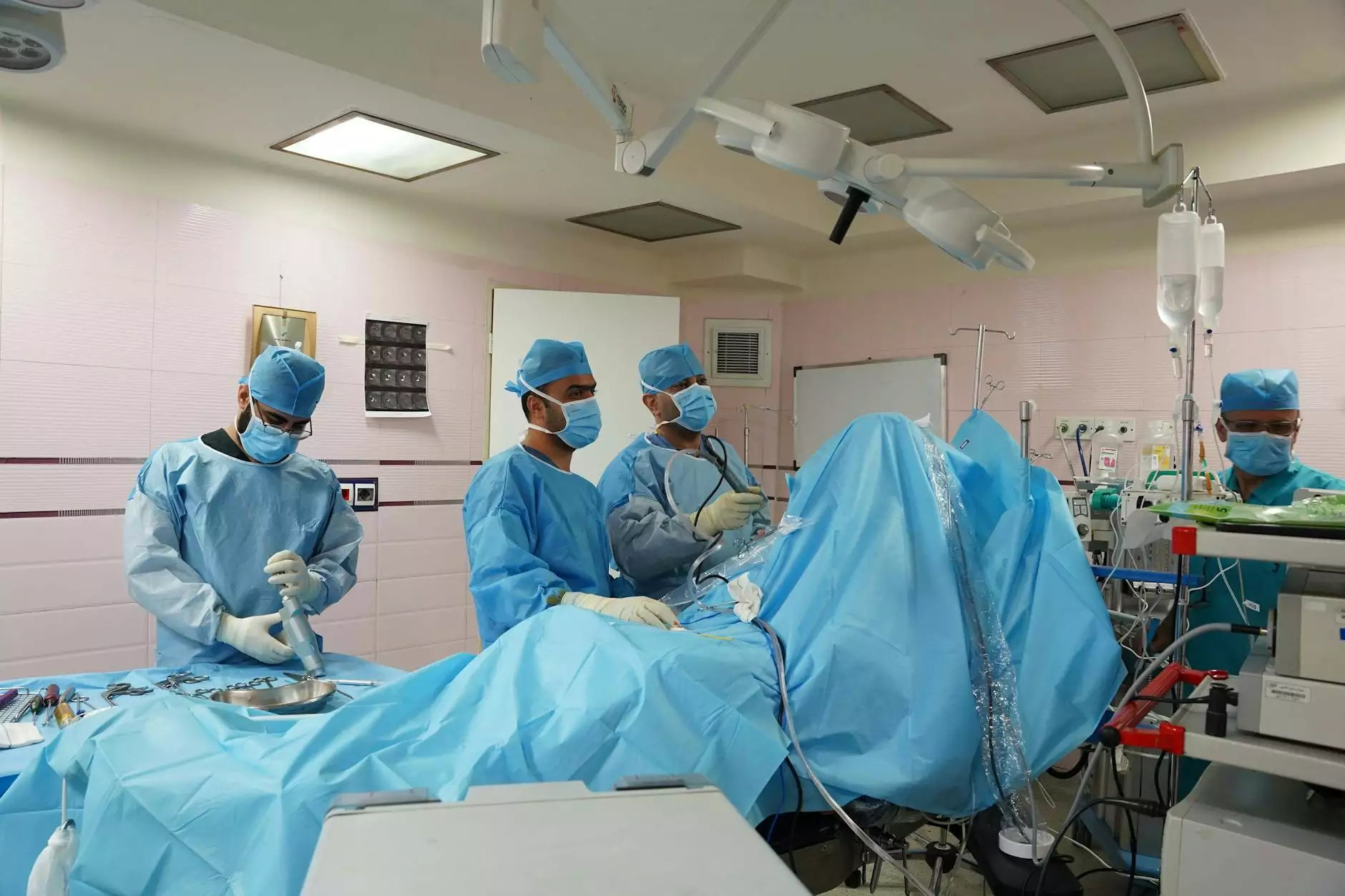Comprehensive Guide to Abdominal Hysterectomy and Bilateral Salpingo Oophorectomy

In today’s landscape of women's health, surgical procedures like abdominal hysterectomy and bilateral salpingo oophorectomy play a pivotal role in improving the quality of life for many women. This article delves deep into these surgeries, their indications, benefits, and potential risks, providing an invaluable resource for patients and healthcare practitioners alike. Given that procedures involving the female reproductive system can be complex and emotional, understanding the ins and outs of these surgeries is essential for informed decision-making.
What is an Abdominal Hysterectomy?
An abdominal hysterectomy is a surgical procedure that involves the removal of the uterus through an incision in the lower abdomen. This procedure is often performed when there are medical conditions that cannot be treated with less invasive options. Here are some common indications for an abdominal hysterectomy:
- Uterine Fibroids: Non-cancerous growths that can cause pain, heavy bleeding, and other complications.
- Endometriosis: A condition where tissue similar to the lining inside the uterus starts to grow outside the uterus, leading to pain and infertility.
- Uterine Prolapse: When the uterus slips from its normal position and into the vaginal canal.
- Abnormal Bleeding: Heavy or prolonged menstrual bleeding that affects a woman's quality of life.
What is Bilateral Salpingo-Oophorectomy?
Bilateral salpingo-oophorectomy is a surgical procedure that involves the removal of both ovaries and fallopian tubes. This surgery is often performed alongside abdominal hysterectomy, particularly in cases where there is a risk of ovarian cancer or other ovarian diseases.
Here are some situations in which a bilateral salpingo-oophorectomy may be indicated:
- Ovarian Tumors: Both benign and malignant tumors in the ovaries may warrant removal.
- Genetic Predisposition: Women with a family history of breast or ovarian cancer may choose this surgery as a preventive measure.
- Severe Endometriosis: A condition described earlier, where the ovaries can be significantly affected.
- Chronic Pain: Unexplained chronic pelvic pain that is suspected to originate from the ovaries or fallopian tubes.
The Combined Procedure: Abdominal Hysterectomy and Bilateral Salpingo-Oophorectomy
Combining an abdominal hysterectomy and bilateral salpingo oophorectomy is a common approach in gynecological surgeries. This combination is particularly effective for conditions such as severe endometriosis, fibroids, and in patients with a familial risk of cancer. The dual procedure not only addresses uterine-related issues but also eliminates any potential problems associated with the ovaries and fallopian tubes.
Preparing for Surgery
Preparation for an abdominal hysterectomy and bilateral salpingo-oophorectomy involves a multifaceted approach:
- Consultation: Schedule a comprehensive consultation with your healthcare provider. Discuss your symptoms, medical history, and concerns regarding the surgery.
- Pre-operative Tests: You may need several tests, including blood work, imaging studies, and occasionally, biopsies to better understand your condition.
- Pre-surgery Instructions: Follow your doctor’s pre-surgery instructions carefully, which may include avoiding certain medications and fasting prior to the procedure.
The Surgical Procedure
A typical procedure for abdominal hysterectomy and bilateral salpingo oophorectomy can be broken down into several key steps:
- Anesthesia: You will be given general anesthesia to ensure you are comfortable and pain-free during the procedure.
- Incision: The surgeon will make a horizontal or vertical incision in your lower abdomen to access the reproductive organs.
- Removal of Organs: The uterus, along with both ovaries and fallopian tubes, will be carefully removed.
- Closure: After the organs have been removed, the incision site will be closed with sutures or staples.
Recovery After Surgery
The recovery period following an abdominal hysterectomy and bilateral salpingo-oophorectomy varies from person to person. Here are some aspects to consider during recovery:
- Hospital Stay: Typically, you may stay in the hospital for 1 to 3 days, depending on your health status and the complexity of the surgery.
- Pain Management: You will likely experience some pain and discomfort post-surgery. Medications will be prescribed to help manage this.
- Activity Restrictions: Avoid heavy lifting and vigorous activities for several weeks. Bed rest may also be recommended initially.
- Follow-up Appointments: Regular follow-ups are crucial to monitor your recovery and identify any potential complications early.
Benefits of the Procedures
There are several significant benefits associated with undergoing an abdominal hysterectomy and bilateral salpingo-oophorectomy:
- Pain Relief: Many patients experience substantial relief from chronic pain caused by conditions like endometriosis and fibroids.
- Reduced Bleeding: Heavy menstrual bleeding often stops immediately after the procedure, leading to an improved quality of life.
- Preventative Measure: For women at high risk for ovarian cancer, the combined surgery significantly reduces this risk.
- Improved Overall Health: The removal of tumors and problematic tissues can enhance overall reproductive health.
Risks and Considerations
As with any surgical procedure, understanding the risks associated with abdominal hysterectomy and bilateral salpingo-oophorectomy is crucial:
- Infection: There is always a risk of infection following surgery.
- Bleeding: Significant bleeding during or after the procedure may occur.
- Internal Injury: Surrounding organs may be accidentally injured during surgery.
- Hormonal Changes: Removal of the ovaries causes immediate menopause in pre-menopausal women, which may lead to various symptoms.
Final Thoughts
The decision to undergo an abdominal hysterectomy and bilateral salpingo oophorectomy can be daunting. However, for many women, these procedures can provide significant benefits and lead to a vastly improved quality of life. Always consult with a qualified gynecologist, such as those at drseckin.com, who can guide you through the process, providing personalized care and support tailored to your individual needs.
In conclusion, understanding these surgeries—their indications, processes, and consequences—will empower you, helping you make informed decisions about your health and wellness. Remember, the path to healing starts with knowledge and support.









